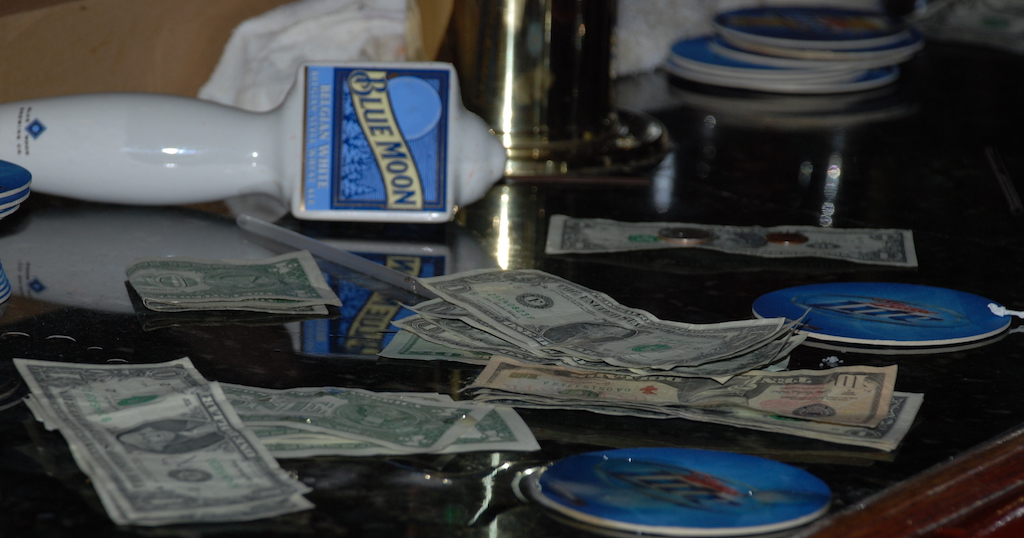
iStock / FotografiaBasica
Welcome to the season when our relationship with candy skyrockets from casual to committed. Yes, the delicious stretch from Halloween to Easter is the most choc-o-late time of the year: big bags of little chocolates, golden coins of gelt, heart-shaped truffles, gooey eggs, hollow bunnies—all designed to express our love and sate our sweet tooth. But as the candy aisles begin to bulge, how do we make sense of the chaos? How do we find the very best versions of these delightful treats? And what’s our criteria for “best”? Flavor? Ethics? Cost?
Whether we’re assessing beer, burritos or chocolate, the designation is subjective, shaped by personal preferences, accessibility, even politics—and further influenced by insights from researchers, the choices made by chocolate connoisseurs, and industry trends (ruby chocolate, anyone?).
We don’t intend to make these delicious decisions for you but, rather, empower you to find your personal best.
Behind the label
Cocoa starts off as cacao—colorful, knobby pods that grow on trees in areas ranging from Hawaii and Mexico to Vietnam and Papua New Guinea. The football-shaped fruits have thick rinds and contain pale, astringent seeds enrobed in a thin layer of pulp. After harvesting, fermentation, and drying, those seeds are what become cocoa and chocolate.
 Barometer Consortium
Barometer Consortium Left, cacao pods drying under the sun. Right, a cacao pod split open
Swedish taxonomist Carolus Linnaeus classified the pods as Theobroma cacao: “food of the gods.” It seems logical: Chocolate is heavenly. But the designation more likely refers to the crop’s role in sacred rituals for the people of Mesoamerica (the region where cacao was domesticated and originally used). Cacao was a primary ingredient in fermented beverages, as well as thin soups made with corn and seasoned with spices and chilis that were consumed by the Olmec, Maya, and Aztec people. The seeds were also used as currency, medicine, and in religious ceremonies. Yale University anthropologist Oswaldo Chinchilla Mazariegos explains that Mesoamericans believed the cacao harvest was a metaphor for human sacrifice—an act, he says, that “was commonly believed to provide nourishment for the gods.”
It was only when cacao was introduced to Europe in the 16th century as the spoils of Hernán Cortés’ Aztec conquest that it started to resemble what we now consume as chocolate. Europeans were initially skeptical of the bitter beans. That is, until they were blended with sugar and transformed into a warm, sweet beverage. In 1847, Joseph Fry, an English doctor who heralded cocoa as a healthy alternative to alcohol, blended cocoa powder with cocoa butter and sugar, molded the paste into small blocks, and— voilà!—the chocolate bar was born.
But as we reported over the summer, the average cocoa farmer receives a small fraction of the price we pay for chocolate—between 3 and 6 percent of the retail price of a chocolate bar. The reasons are nuanced, but are, in part, due to what’s revealed on the wrapper…
On the label
Percentage
A bar only has to contain 10 percent cocoa mass—a combination of the solid, nib part of the cocoa bean, plus cocoa fat—to be classified as chocolate. Any remaining percentage is the allowance for other ingredients like sugar, milk powder (for milk chocolate), and additional fats, emulsifiers, or inclusions. (If your bar, for example, says “75% cocoa,” that means 75 percent of the bar is cocoa mass and 25 percent is made up of additional ingredients.)
A Lindt chocolate bar featuring 99% cocoa mass
Right now, there’s a growing trend toward two-ingredient chocolate. Fewer ingredients don’t make a bar more virtuous or delicious, but they do change the apportionment of money that could, potentially, go back to the cocoa farmer. The higher the cocoa content, says Laurent Pipitone, an economist who specializes in cocoa, the more positive the impact on the cocoa supply and the farmers who grow it.
Organic
That supply isn’t only affected by how much chocolate we scarf. Diseases, including black pod rot, witches’ broom, and vascular streak dieback—along with pests such as mirids, moths, and beetles—decimate between 30 and 40 percent of the world’s cacao crop, with annual losses estimated at $2 to $3 billion. While pruning, the reduction of shade, and the quick removal of diseased plants and pods are ways to combat these challenges, Romina Umaharan, the team leader for plant pathology at the University of West Indies’ Cocoa Research Centre says that, with certain diseases, synthetic fungicides can be “more convenient, readily available and may give quick results.” They don’t, however, work on all diseases.
 Theo Chocolates
Theo Chocolates A chocolate bar featuring both the “USDA Organic certification” and the “Non-GMO Project Verified” label
USDA Organic is a certification that confirms ingredients weren’t grown with synthetic chemicals, including fertilizers. The amount of chemical inputs varies, depending on whether or not a product is 100 percent organic. It means the people who work on cacao farms (as well as their soil and water supply) will have less exposure to synthetic inputs, but it can also limit how farmers can respond to pest and disease challenges.
The USDA Organic designation also ensures the product hasn’t been developed through genetic engineering. Cocoa isn’t currently bred through this technology, but the other ingredients that are added to chocolate—such as sweeteners derived from sugar beets or corn—often are (at least in the United States). That’s why you might also find a Non-GMO Project Verified label on your chocolate wrapper.
(We won’t go too far down the rabbit hole here, but it’s worth keeping in mind that “genetic modification” is an imprecise, confusing term. Almost all foods are modified on a genetic level—it’s how we create improved varieties of the plants and animals we eat. The reference is meant to allude to a particular kind of technology that’s considered controversial.)
Fairtrade, Rainforest Alliance, UTZ
While the organic label focuses on the crop, these certifications emphasize the producers behind it. Antonie Fountain, founder of the VOICE Network, explained in his interview for The Slow Melt chocolate podcast that, collectively, the certifications are an important first step toward improving the livelihoods of people behind cocoa, providing “some form of checks and balances to make sure that social aspects are better controlled, that environmental aspects are improved upon, and that the economic challenges that the farmers have … are alleviated, to some extent.”
 NFE
NFE What do common chocolate bar certifications mean?
Fair Trade, the oldest of the protocols, works with farmer cooperatives and global suppliers to ensure a baseline price, plus a premium payment (in cocoa, starting at $200), for certified products. This extra money is paid to the co-op, not individual farmers. Fair Trade International’s 2018 monitoring report shows the premiums paid for cocoa were used mainly for human resources and administrative costs, funding infrastructure and facilities, and purchasing farm tools and other inputs.
In January, Rainforest Alliance merged with the UTZ certification program. They are currently distinct efforts, but will launch a joint certification program in 2020. UTZ uses two sets of guidelines—one around the growing and harvesting of crops and another on how the products are handled once they leave the farm. Rainforest Alliance has slightly more of an environmental bent, with standards focused on farm management, from soil quality and resource conservation to the use of farm management practices that limit synthetic pesticide applications.
So, while these protocols do play an important role in improving the lives of farmers, their reach is limited. In 2016, for example, less than half of the cocoa certified by Rainforest Alliance and Fair Trade was actually sold at a higher price. (UTZ sold more than half, but not all, its certified cocoa at a price premium.)
The certifications also don’t ensure farmers will earn more money. A recent study on household incomes in Ivory Coast (the world’s largest cacao producer) from Fairtrade International (that we reported on back in the summer) confirms that price premiums are useful but not high enough to lift farmers out of poverty: “To help 80% of farmers above the extreme poverty line through price increase only, prices would need to double approximately.” This poverty is the primary reason child labor and deforestation not only endure, but have gotten worse. And that’s why, Antonie Fountain from VOICE explains, these certifications are still important. The labels, he says, indicate to shoppers, “You can buy me, I am fairer than the others.”
Directly traded
A newer trend that may help combat these challenges is directly traded cocoa: beans that are purchased by smaller chocolate makers who travel to the areas where they are grown to buy cocoa directly from farms or from specialty bean brokers. This focus, unlike the aforementioned certifications, is on flavor—on coaxing the very best qualities out of the cocoa harvests and bringing chocolate lovers along for the journey.
 Barometer Consortium
Barometer Consortium West African farmer drying cocoa beans
The caveat is that while some makers and suppliers conduct third-party audits, there isn’t any standardization or industry oversight over the use of this term. So, the connection between the people who grow the cacao and those who transform it into chocolate might run deep—or it could be superficial. The companies that make that investment usually detail those relationships on their social media or websites.
Origin
Another designation that can mean a little—or a lot—is origin. If you don’t see a location listed, it means your chocolate is made from a blend of beans from a few (or many) places. This is characteristic of the commodity market, but blends are also used by smaller makers.
A single origin can offer up an exquisite depth of flavors (analogous to cheese or wine) found in the terroir of a single country or region, but diverse flavors can also be revealed—or hidden—through blends. There is no regulation over the term “single-origin,” so chocolate lovers don’t necessarily know what percentage of the beans actually come from a single place.
Tree-to-bar, blossom-to-bar, bean-to-bar, and so on …
There is a panoply of terms used in chocolate without regulation or oversight. They aren’t necessarily misleading, but eaters should know that they might mean different things to different makers (who may identify themselves by terms such as “craft,” “artisan,” and “small-batch”). Designations that highlight the journey from plant to product are very much in vogue with more specialized makers. They are intended to stress that the chocolate is made from the cocoa bean (rather than working from pre-made chocolate)—like making a cake from scratch versus a box of Betty Crocker. But, of course, bean-to-bar isn’t only the practice of smaller makers, but also of the world’s largest manufacturers.
Best by
Because this substance is so precious, we suggest you view the “consume by” date as a suggestion. When stored properly (between 65 and 70°F, away from direct sunlight, moisture, and any strong smells), chocolate is safe—and delicious—well past any printed expiration. The whitish cast (called “bloom”) that’s sometimes found on your bar is the separation of cocoa fat from the solids, not mold, and will reconstitute as soon as the chocolate starts to melt.
Beyond the label
Okay, we understand this guide may have raised more questions than it answered—but that isn’t necessarily a bad thing. From both a flavor and production perspective, chocolate is far more complex than most people realize. Before you step into the candy aisle, figure out what’s important to you—how you define “best.” Sometimes it’s easiest to start with just one or two priorities you can be vigilant in researching and adhering to.
But don’t let information overwhelm the profound pleasure of indulging. Learning more about this dynamic, delicious industry—and putting your money where your mouth is—will not only enhance your experience but could impact the entire trajectory for the food of the gods. It will take the folks who are fixed on Twix, as well as those who are curious about craft, to sustain our chocolove—for years to come.
To learn even more about chocolate, check out Simran’s chocolate podcast The Slow Melt.











